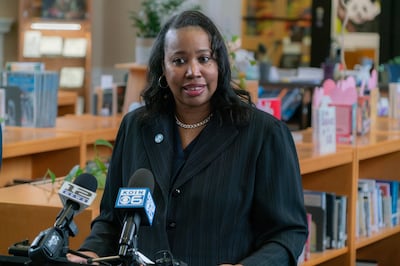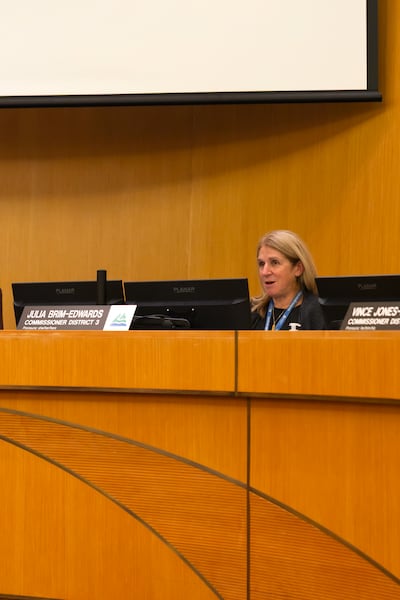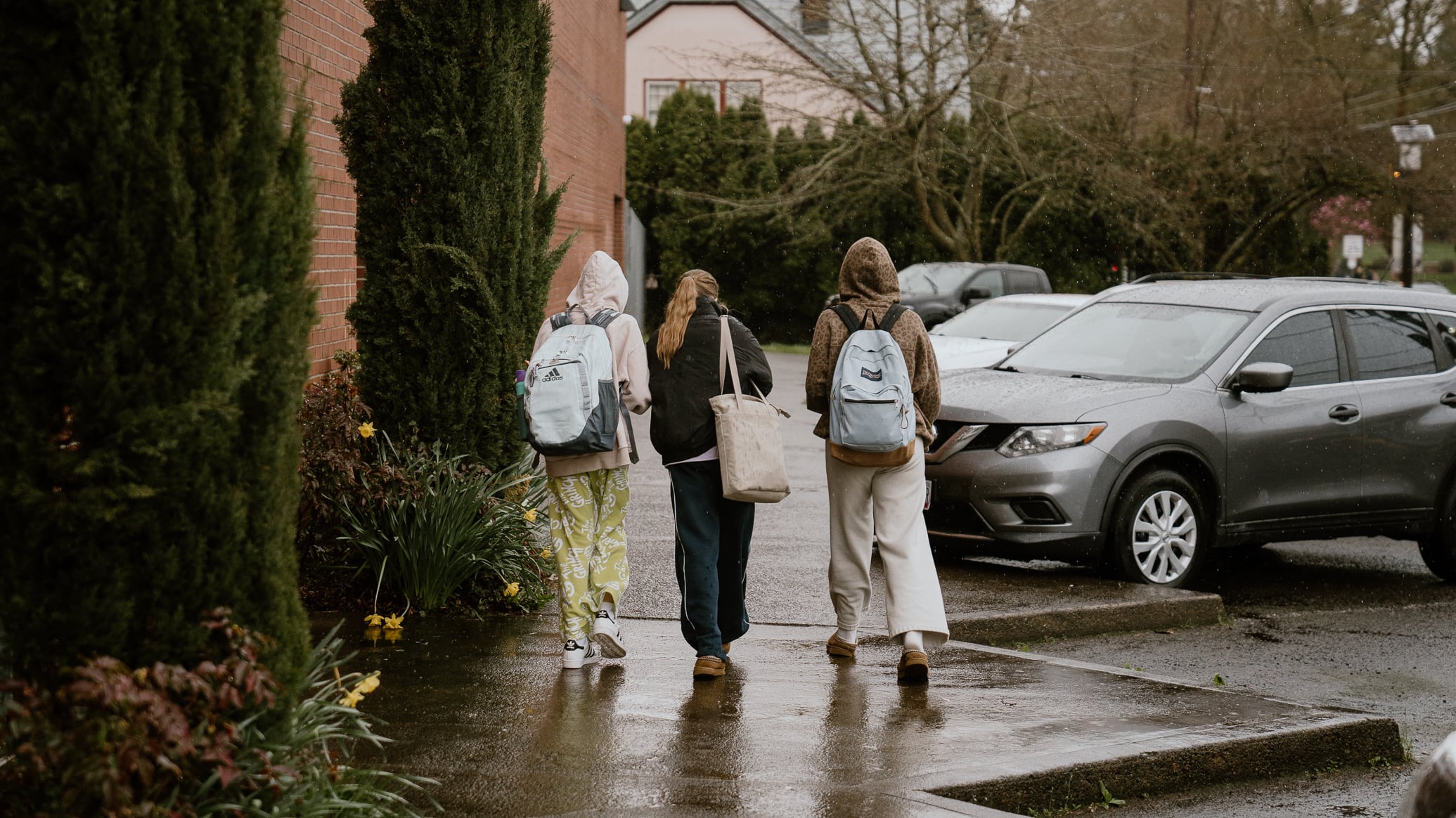It’s been 10 years since Portlanders woke up to the news that their city was doomed. A July 2015 article in The New Yorker, titled “The Really Big One,” described in vivid detail how an impending Cascadia megaquake would devastate our region. This earthquake, according to the Oregon Department of Emergency Management, has a 37% chance of happening in the next 50 years.
Per Olstad is a father of two living in Northeast Portland. He remembers reading that article and latching on to the most salient detail: The brick school his children would attend, Beverly Cleary, was an unreinforced masonry building, the most dangerous kind of building to be in during an earthquake.
That fear still haunts him. “Nearly every week, I have at least one episode of intense anxiety,” Olstad says, “thinking about how terrified my children would be if a significant earthquake comes and the building starts falling down around them.”
Now, a newly released report from Portland Public Schools shows that the condition of Beverly Cleary and 18 other brick schools still poses an enormous risk to the thousands of students who attend school in these buildings.
“These [URM] buildings are definitely not safe for large earthquakes,” says Jeffrey Berman, a professor of civil and environmental engineering at the University of Washington whose work focuses on earthquake engineering. Berman independently reviewed the district’s seismic assessment for Willamette Week.
The assessment has not been previously reported and was released to WW in response to two years’ worth of questions and records requests. It provides a list of seismic vulnerabilities for 80 total sites, including the 19 unreinforced masonry buildings, which were, according to the report, “broken out due to their relatively high risk in order to be prioritized.”
Peter Dusicka, a professor of civil and environmental engineering at Portland State University, reviewed several of the URM schools in the report and pointed out to WW that some of the schools, such as Beverly Cleary, have alarming deficiencies, such as beams, girders and trusses resting on URM walls. “It could be a complete collapse in this situation,” Dusicka says.

The report also lists estimated retrofitting costs. For some schools, like Rieke Elementary in Southwest Portland, the cost to retrofit is $4 million. For other schools with more URM square footage, like Beverly Cleary, the cost is $14 million. The grand total to retrofit the URM elements of all 19 of the highest-risk schools is $109 million. (The district says construction costs have risen to $126 million, and the total project cost would be “substantially higher.”) Completing seismic upgrades on all 80 buildings? That’s $847 million.
This May, PPS will ask voters to approve its largest construction bond yet: $1.8 billion to modernize school facilities. It isn’t clear how much of that bond would go to seismic retrofits or upgrades. According to PPS, the bond scope includes $1.15 billion for building modernization, $269 million for deferred maintenance and facility improvements, $242 million for educational and technological improvements, and $166 million for administration and contingencies.
Unlike previous bonds, the 2025 bond scope does not include separate dedicated seismic funds. However, Eddie Wang, the School Board’s chair, says both the modernization and deferred maintenance funds may be available for seismic upgrades. “In terms of discussions among the board and with the superintendent, the seismic upgrade issue is front and foremost.”
PPS spokeswoman Valerie Feder says the seismic assessment is the first step in prioritizing this work. “The district has a lot of capital priorities ahead,” she tells WW. “We are doing the seismic analysis to see what the biggest priorities in this area are; then, we will consider them along with all the other facility priorities and make determinations from there.”

It’s almost certainly the case that passage of the bond will make schools safer when the Big One hits. Two of the three high schools slated to be modernized with 2025 bond money, Cleveland and Jefferson, are URM buildings. And the bond’s deferred maintenance and modernization budgets would cover the cost of retrofitting the 19 brick schools, if the district chooses to use it that way.
On the other hand, the bond in front of voters does not include a promise to make seismic upgrades on elementary school buildings. As WW reported last week (“Too Many High Schools,” March 19), the district is upgrading more high schools than it is projected to need. Spiking one of these high school rebuilds would save the district $400 million, more than enough money to rebuild or replace all 19 brick schools—and go a long way toward addressing all the seismic needs.
Why hasn’t PPS made that commitment? One possible reason is that Superintendent Dr. Kimberlee Armstrong says she wants to start a conversation this year about closing some schools and reshuffling attendance boundaries. The district could simply close some of the most dangerous buildings, and doesn’t want to commit to upgrading them.
Another reason? Parents aren’t asking for earthquake safety.

Julia Brim-Edwards, a PPS Board member and Multnomah County commissioner, says she doesn’t often hear from parents concerned about building safety during an earthquake. She says heating and cooling during extreme weather events, air quality, securing buildings against school shootings, and inaccessible buildings are the issues most often raised by parents, students and school staff.
Olstad says this is because of a lack of knowledge, not because parents are comfortable sending their children into schools that will likely collapse. “I talk to parents all the time, who have no idea,” Olstad says. “Very few parents know the full extent of the issues and know just how dangerous it is.”
Here’s what will likely happen if you are inside an unreinforced masonry building when a major earthquake hits: The wavelike shaking will cause the mortar holding the bricks together to crumble and crack. The brick walls will peel away from the building, collapsing onto the lawn or street. Depending on the structural elements of the building, the roof and upper floors could end up without walls to support them, and they would collapse on anyone still inside below.
Even scarier, the described scenario could happen with a smaller earthquake. “With unreinforced masonry, the level of shaking that causes significant damage like described doesn’t have to be that big,” PSU’s Dusicka says. “We don’t even have to have a big scary megathrust for these buildings to be in major trouble.”

Portland Public Schools has been tackling its URM problem for nearly 30 years, one school at a time. So far, Franklin, Grant and Roosevelt high schools have been fully retrofitted, along with Alameda, Lewis and Kellogg primary schools. The funds for these retrofits come from construction bond measures approved by voters—$482 million in 2012, $790 million in 2019 and $1.2 billion in 2020—with additional funding coming from the state’s Seismic Rehabilitation Grant Program.
Much of that money has been spent on roof replacements. When replaced, the new roofs get attached to the walls at the top of the building with seismic bracing. Seismic engineers say this is the correct first step, but does not fully mitigate the risk.
“Securing the roof to the walls is essential to minimize damage. However, if the walls are deficient in strength and ductility, the walls will fail and the roof comes down,” says Dr. Franz Rad, a professor of structural engineering at PSU and a renowned researcher on seismic retrofitting.
There has also been a lack of clarity about why particular schools are being prioritized. For example, the $17.2 million in the 2020 bond earmarked for seismic upgrades was ultimately allocated to two capital improvement projects that were already underway, at Lent Elementary and Bridger Creative Science schools. Neither was among the highest-risk URM schools.
Olstad has spent years pushing PPS to provide a timeline and prioritization for seismic retrofitting at Beverly Cleary. He says he’s not hopeful that the bond money will be spent on these needed upgrades.
“Our attempts to engage the School Board and other PPS leaders have all been either ignored or pushed off,” Olstad says. “Obviously, we do care about Beverly Cleary, but ultimately we just care that [PPS] is going to use this money in a sensible way to address the biggest risks.”

Board chair Wang, on the other hand, emphasizes that the School Board is committed to transparency. “These things are decided and discussed openly,” he says. For example, he pointed to the tradeoff of delaying HVAC updates in order to prioritize seismic upgrades. “It’s absolutely useful to have this conversation.”
Among the parents WW spoke to for this story, there were mixed reactions. Some said they didn’t know about the issue. Some said they thought PPS was handling it. Others were outraged. A few expressed doubt that the earthquake would ever happen. Some said they couldn’t let themselves think about it because it would only cause distress.
Olstad says having his children attend an unreinforced masonry building is a constant emotional and mental strain for him and his wife. “We have talked repeatedly about moving our kids out of Beverly Cleary. We love the neighborhood and the school community. We also believe deeply in public education. Trying to balance that against the risk they face in that building feels impossible.”
